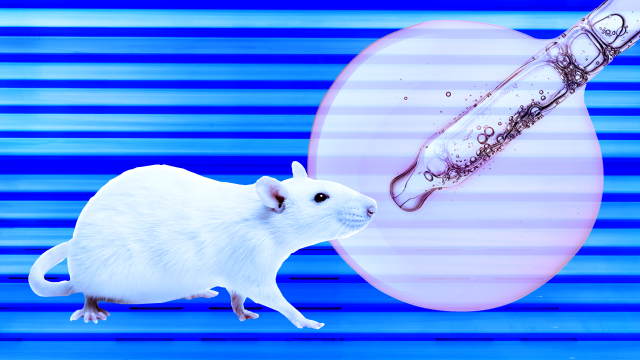A team of scientists claim to have found a novel way to treat stubborn skin infections that don’t respond to antibiotics. In experiments with mice, they showed that a combination of blue light mixed with a compound found in oregano oil could easily kill antibiotic-resistant bacteria living in skin wounds without harming the mice. If validated in people, the research may someday provide doctors a new tool against superbugs.
The need to find therapies against antibiotic-resistant bacteria is more pressing than ever. But it’s become harder and harder to find and develop new antibiotics in recent decades, and there’s always the worry that bacteria will eventually learn to adapt to new drugs, too. That’s led some scientists to explore methods of killing bacteria that are very different from antibiotics. Some have tried to use certain kinds of radiation, namely blue light. Others have studied essential oil compounds isolated from plants and spices, such as the compound carvacrol, found in oregano and thyme.
[referenced id=”1660763″ url=”https://gizmodo.com.au/2020/12/yes-super-gonorrhea-is-real-and-its-gonna-get-worse/” thumb=”https://gizmodo.com.au/wp-content/uploads/2020/12/29/hw6qslvlsz2cuewjjkqm-300×169.png” title=”Yes, Super Gonorrhea Is Real and It’s Gonna Get Worse” excerpt=”Over the weekend, a particularly awful pair of words started trending on social media: super gonorrhea. That’s because the World Health Organisation recently warned that the pandemic is helping fuel the rise of antibiotic-resistant bacteria, including the bacteria that cause gonorrhea. Unfortunately, the situation is only likely to get worse.”]
Senior study author Mei Wu, a dermatologist at Harvard Medical School, and his team have previously studied blue light and carvacrol on their own in the lab, showing they can kill or stop from growing different types of bacteria, as has other research. Blue light is already cleared by the Food and Drug Administration as a therapy to treat acne-causing bacteria. But on their own, these therapies may not be effective enough to treat more serious drug-resistant infections in people, such as ones caused by methicillin-resistant Staphylococcus aureus, or MRSA.
“We combined the two on the assumption that essential oils — carvacrol is isolated from essential oil — are fragrant and unstable. They may respond to light and become oxidized. We wanted to check whether the oxidized carvacrol was more potent than carvacrol itself in killing bacteria,” Wu said in an email. “And it turns out the combination is more stronger than we thought, really exciting us.”
Wu and his team infected the skin of mice with various bacterial baddies. This included MRSA and hardy biofilms of troublesome bacteria often found in hospitals — slimy colonies of bacteria that tend to be very resistant to antibiotics and disinfectants. Then they tested out the blue light and carvacrol, on their own and together.
By their lonesome, neither could clear these infections. But together, the therapy either completely or substantially treated these infections; it also saved 100% of mice given skin infections from the bacteria Pseudomonas aeruginosa designed to be fatal. Just as importantly, the therapy didn’t seem to harm the mice in any way. The bacteria didn’t easily evolve a defence against the therapy either, even when the scientists deliberately gave the mice lower doses that wouldn’t kill all the bacteria (this is commonly how antibiotic resistance happens).
Their findings were published Wednesday in Science Translational Medicine.
According to Wu, the combination therapy appears to work by creating a chain of chemical reactions — fuelled by oxygen — that turns carvacrol into more potent bacteria-killing compounds. But because these reactions rely on molecules commonly found in bacteria, not in the cells of mammals, that should limit any unwanted toxic effects. The therapy also seems to destroy bacteria in multiple ways, as opposed to antibiotics, which typically attack one aspect of how bacteria grow or survive, meaning it will be harder for bacteria to adapt to it.
The results are, of course, preliminary. Mice are not humans, and many a promising therapy has floundered along the way from the lab to clinical trials. But if they hold true, then it might very well lead to a vital option for these infections. Disease-causing bacteria commonly enter the body through the skin, and resistant skin infections can turn into widespread infections that cause sepsis and shut down organs, particularly in already weakened hospitalized patients. If nothing else, the possible ease and safety of this combination therapy could allow it to be used as a disinfectant in high-risk settings like hospitals.
For now, according to the authors, the next step will be testing animals with skin that more resembles that of humans, namely pigs. Only after that will clinical trials in people follow.
“My team continues this research vigorously given the increasing threat of multiple-drug resistant superbugs to our society and patients,” Wu said. “It is urgent and no time to stop.”
